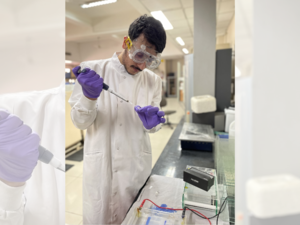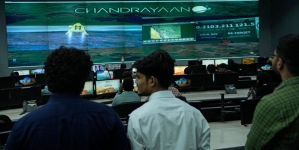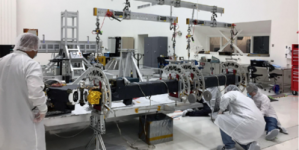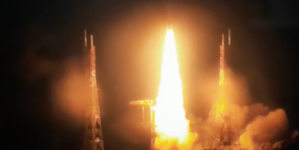-
LONDON: Run For Modi” Event In London To Drum Up Support For PM Modi - 12 hours ago
-
LONDON: Indian-Origin Candidate On How He Plans To Win London Mayoral Polls - 2 days ago
-
HARVARD: No Country Is Perfect”: Physics Wallah Urges Indian Students At Harvard, Stanford To Return - April 27, 2024
-
CALIFORNIA: PM Modi Put India On World Map As Credible Innovator- IT Industry Leaders - April 26, 2024
-
WASHINGTON: Indian Students Bag NASA Awards For Human Exploration Rover Challenge - April 25, 2024
-
LONDON: Indian-Origin Teen In UK Gets “Life-Changing” Cancer Treatment - April 25, 2024
-
SILICON VALLEY: All About Pavan Davuluri, New Head Of Microsoft Windows - April 25, 2024
-
LONDON: UK’s India Gate To Commemorate Role Of Indian Soldiers From World Wars - April 24, 2024
-
HARARE: Shri Bramha Kumar appointed as the next Ambassador of India to the Republic of Zimbabwe - April 23, 2024
-
LONDON: Indian-Origin Principal Wins UK Legal Challenge Over School Prayer Ban - April 23, 2024
NEW DELHI: From Pune to the cosmos- India to play a key role in search for aliens
NEW DELHI: Indian astronomers are poised to play a pivotal role in the global effort of the 16-nation Square Kilometer Array Observatory (SKAO), an ambitious venture set to embark on scanning the cosmos in 2027. India, which joined the consortium in January, is among the key contributors to what is hailed as the largest telescope project of the 21st century, combining the forces of radio astronomy and artificial intelligence (AI) to explore cosmic phenomena including the lifecycle of stars, habitable planets, and the potential for extraterrestrial life, a report said.
The SKAO, with a budget of €2.2 billion ($2.4 billion), includes member nations such as South Africa, Australia, the UK, Canada, China, France, Germany, Japan, Italy, the Netherlands, Portugal, South Korea, Spain, Sweden, and Switzerland. India has allocated Rs 12.5 billion ($150 million) for the establishment of a regional data center in Pune, a city renowned for its radio astronomy research. This center will house supercomputers tasked with processing the vast scientific data collected by the telescope, the RT report said.
Utilizing radio interferometry, the SKAO will integrate signals from numerous antennas across large distances to produce images of unprecedented clarity and brightness. This network of antennas, spanning continents, aims to document cosmic phenomena to fill the equivalent of 1.5 million laptops annually with data.
“The idea is to start training this year (using AI to decode scientific information) with approximately two petabytes of data archived through GMRT. We will use this to develop a small model demonstrating that India is ready to receive and analyze the data,” said Prof Yashwant Gupta, director of the National Centre for Radio Astrophysics (NCRA) in Pune.
The SKAO’s construction sites include South Africa’s Karoo region and Western Australia, chosen for their remoteness to minimize signal interference. The first components of the telescope’s dish array antennas were installed in early March, with full operational capability expected by 2027.
What is the Square Kilometer Array Observatory (SKAO)?
The Square Kilometer Array Observatory (SKAO) is an international effort to build the world’s largest radio telescope, aiming to explore the universe in unprecedented detail. It involves the collaboration of multiple countries and is one of the most ambitious astronomy projects of the 21st century. The project seeks to provide answers to some of the most fundamental questions about the universe, including the nature of gravity, the search for life beyond Earth, and the mysteries of dark energy and dark matter.
The SKAO is not a single telescope but rather a collection of thousands of antennas and dishes spread over long distances, creating a total collecting area of approximately one square kilometer, hence its name. It will have two major components: one located in South Africa, consisting of mid-frequency dish antennas, and the other in Western Australia, composed of low-frequency antennas.
The array’s design allows for an immense field of view and the capability to survey the sky more than ten thousand times faster than has ever been done. By combining signals from many antennas spread over vast distances, SKAO will effectively create a telescope with a diameter of thousands of kilometers, providing astronomers with sharp and sensitive images of the sky in radio wavelengths.
Radio astronomy, the field SKAO will advance, observes the universe in radio frequencies, allowing scientists to study celestial phenomena that are not visible with optical telescopes, including the formation and evolution of stars and galaxies, the cosmic web, and potentially the signatures of extraterrestrial life.
























